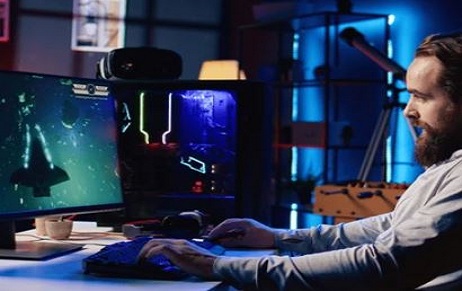New paradigms in communication networks, promise ultra-fast connectivity, and ubiquitous artificial intelligence (AI) integration along…
TAKEDA PHARMACEUTICAL’S PATENT ON CANCER DRUG VELCADE® UPHELD BY THE US COURT OF APPEALS FOR THE FEDERAL CIRCUIT
On July 17, 2017, the United States Court of Appeals for the Federal Circuit ruled that the U.S. Patent No. 6,713,446 (“the ‘446 patent”) covering Takeda Pharmaceutical’s cancer drug Velcade® is valid and enforceable. The appellate court decision overturned an earlier 2015 decision from a US District Court which ruled the ‘446 patent was invalid as the compound it covered was the result of an obvious process. The lawsuit came on the heels of ANDA submissions by generic companies, including Sandoz Inc, Accord Healthcare Inc, and Actavis LLC, to the FDA for a generic version of Velcade® prior to the expiration of the ‘446 patent in 2022.
VELCADE®:
Velcade® (bortezomib) is approved for the treatment of people with multiple myeloma (a cancer of the plasma cells). Velcade® is also approved for the treatment of people with mantle cell lymphoma (a cancer of the lymph nodes). The drug generated U.S. sales of $1.13 billion in 2016.
In 2003, the Food and Drug Administration (“FDA”) granted “accelerated approval” to New Drug Application No. 21-602 for VELCADE® for Injection, for the treatment by intravenous administration of patients with multiple myeloma who have received at least two prior therapies and have demonstrated disease progression on the last therapy. VELCADE® for Injection was subsequently approved in 2005 for treatment by intravenous administration of patients with multiple myeloma who had received at least one prior therapy; in 2006 for treatment by intravenous administration of patients with mantle cell lymphoma who had failed at least one prior therapy; in 2008 for frontline treatment by intravenous administration of patients with multiple myeloma; in 2012 for subcutaneous administration; and in 2014 for treatment of adult patients with multiple myeloma who had previously responded to VELCADE® for Injection therapy and relapsed at least six months following completion of prior VELCADE® for Injection treatment.
The ‘446 patent has been listed in connection with VELCADE® for Injection in the FDA’s Orange Book.
US District Court ruling related to VELCADE® patent:
On August 2, 2012, November 19, 2012, and December 21, 2012, Millennium Pharmaceuticals Inc filed patent infringement lawsuits in the United States District Court for the Delaware against Sandoz Inc, Accord Healthcare Inc, and Actavis LLC (collectively, “defendants”) respectively, alleging that the ANDA applications filed by the defendants infringe on claims 20, 31, 49, and 53 of the ‘446 patent. The defendants argued, and the District Court agreed, that asserted claims 20, 31, 49, and 53 of the ‘446 Patent were invalid as obvious.
Millennium Pharmaceuticals Inc, the Takeda Oncology Company, is the exclusive licensee of the ‘446 patent which covers a D-mannitol ester of bortezomib, the active ingredient in Velcade®. This active ingredient is claimed in claim 20 of the ‘446 patent:
[Claim 20] The lyophilized compound D-mannitol N-(2-pyrazine)carbonyl-L-phenylalanine-L-leucine boronate.
Claims 31, 49, and 53 of the ‘446 patent recite method of preparing the D-mannitol ester of bortezomib via lyophilization, a lyophilized cake comprising the D-mannitol ester of bortezomib, and reconstitution of the lyophilized mixture with a pharmaceutically acceptable carrier, respectively.
[Claim 31] The method of claim 23, wherein the compound of formula (1) is D-mannitol N-(2-pyrazine)carbonyl-L-phenylalanine-L-leucine boronate.
[Claim 49] A lyophilized cake comprising the compound of claim 20.
[Claim 53] The method of claim 31 further comprising (c) reconstituting the lyophilized mixture with a pharmaceutically-acceptable carrier.
Bortezomib and its esters were already described and claimed in U.S. Patent No. 5,780,454 (“the ‘454 patent”). The ‘454 patent also identified bortezomib as a very potent, promising lead candidate with the highest in-vivo activity of all the compounds disclosed in the ‘454 patent. The ‘454 patent was considered as the closest prior art document by the defendants as well as the district court.
At trial, the defendants predominately argued that the asserted claims were obvious because the ‘446 patent claims the inherent result of an obvious process-namely, that freeze-drying bortezomib with mannitol produces an ester. Specifically, the defendants argued that lyophilization is a standard formulation option and that one skilled in the art would have chosen lyophilization process in order to stabilize bortezomib. In response, Millennium Pharmaceuticals argued that a person of ordinary skill would avoid lyophilization in developing a formulation involving bortezomib because bortezomib was known to be unstable even in the dry state as a freestanding solid compound. Millennium Pharmaceuticals also argued that a person of ordinary skill would not have expected a lyophilized mannitol ester of bortezomib to provide dramatic improvements in stability, solubility and dissolution as compared to bortezomib. The district court however agreed with the defendants that lyophilization was well-known in the field of formulation and often utilized when a liquid formulation provided limited success, and that the decision to attempt a lyophilized formulation of bortezomib was routine application of a well-known problem-solving strategy. The district court also concluded that mannitol was among the “finite number of identified, predictable solutions” to freeze-drying investigational anti-cancer drugs like bortezomib, and one skilled in the art would have found it obvious to choose mannitol for the lyophilization process. As such, the asserted claims of the ‘446 patent were found invalid under 35 U.S.C. § 103.
US Appeals Court reverses the District Court’s obviousness determination:
The US Court of Appeals for the Federal Circuit first analyzed the District Court’s obviousness determination by framing the relevant question as whether a person of ordinary skill, seeking to remedy the known instability and insolubility and to produce an efficacious formulation of bortezomib, would obviously produce the claimed and previously unknown D-mannitol ester of bortezomib. In its analysis, the Federal Circuit found error in the District Court’s obviousness determination because (1) there is no teaching or suggestion in the prior art references to produce the claimed mannitol ester, (2) no reference or combination of references provide a reason to make the claimed mannitol ester of bortezomib, and (3) no reference shows or suggests ester formation at freeze-drying conditions, or that any such ester might solve the problems of instability and insolubility of the free acid while dissociating rapidly in the bloodstream.
The Federal Circuit agreed with the defendants that lyophilization was generally known in formulating pharmaceutical products, bulking agents were known for use in lyophilization, and mannitol was a known bulking agent. However, the Federal Circuit explained that for the compound to be obvious, the prior art must teach or suggest that lyophilization of bortezomib in the presence of mannitol would produce a chemical reaction and form a new chemical compound (i.e. mannitol ester of bortezomib), or provide a reason to make this specific new chemical compound, or describe that this new compound would solve the previously intractable problems of bortezomib formulation. The Federal Circuit also stated that “[a]lthough mannitol was a known bulking agent, and lyophilization was a known method of drug formulation, nothing on the record teaches or suggests that a person of ordinary skill should have used mannitol as part of a synthetic reaction to make an ester through lyophilization.”
With regard to the District Court’s conclusion concerning the unexpected results and commercial success of the lyophilized mannitol ester of bortezomib, the Federal Circuit made the following ruling:
“We conclude that the district court should have treated bortezomib as the closest prior art compound, and acknowledged the unrebutted evidence that the D-mannitol ester of bortezomib exhibited unexpected results compared with bortezomib, including unexpectedly superior stability, solubility, and dissolution.”
“The district court clearly erred in attributing Velcade®’s commercial success to bortezomib alone, as bortezomib is not a viable commercial product and had been denied FDA approval because of its instability. The D-mannitol ester was responsible for Velcade®’s successful results, for the D-mannitol ester is necessary to provide the required solubility and stability.”
Accordingly, the Federal Circuit reversed the District Court’s ruling that the asserted claims of the ‘446 patent are invalid due to obviousness. The appellate court’s ruling will help Takeda to put off the risk of generic competition until the ‘446 patent expires in 2



